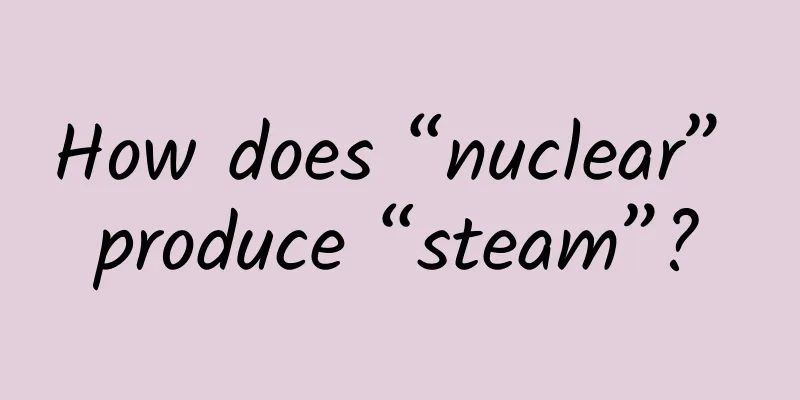How does “nuclear” produce “steam”?

|
Science Times reporter Ji Chunhong On the winding coastline of the Yellow Sea, there is a special pipeline about 23 kilometers long. One end of it is connected to the nuclear power plant and the other end is connected to the petrochemical base. It continuously transports the clean steam converted from nuclear energy to various production lines in the petrochemical base. On June 19, 2024, the country's first industrial nuclear energy steam supply demonstration project, "Heqi No. 1", was successfully put into operation at the Tianwan Nuclear Power Plant in Lianyungang, Jiangsu. This 600-ton/hour steam supply line can provide 4.8 million tons of industrial steam to the base every year. So far, "Heqi No. 1" has supplied more than 1 million tons of clean steam to the outside world. How is industrial steam produced? It can be compared to a combination of "boiling water" and "self-heating pot". The principle of power generation in a nuclear power plant is actually the same as boiling water. It is to heat water into steam and drive the steam turbine to generate power. The principle of nuclear energy steam supply is like heating a self-heating pot. "Boiling water" is equivalent to the heating pack of the "self-heating pot". The food in the "self-heating pot" is equivalent to the desalted water after desalination of seawater. The heating pack generates heat to heat the food in the hot pot above, but the two are not in contact, and the heating pack will not dirty the hot pot. "Heqi No. 1" uses the secondary circuit steam of Tianwan Nuclear Power Units 3 and 4 as the heat source, and sends 1.8 MPa and 248 degrees Celsius steam to the Lianyungang Petrochemical Industrial Base through an independent pipeline network. The nuclear power unit itself has four safety barriers, which ensure the cleanliness and safety of nuclear energy steam supply from the source. In the steam supply system between the nuclear power plant and the petrochemical base, there is only heat exchange, without any material exchange of water or steam, which further ensures that the nuclear energy steam supply is clean, safe and reliable, and has no radiation. Compared with traditional coal-fired steam generation, nuclear energy greatly reduces carbon emissions in steam production. It is estimated that the heat generated by the fission of 1 kg of uranium-235 is equivalent to 2,700 tons of standard coal, and one ton of standard coal can produce 5.5 to 8 tons of steam. This means that the annual steam supply of "Heqi No. 1" can reduce the consumption of about 400,000 tons of standard coal for the petrochemical base, equivalent to reducing carbon dioxide emissions by 1.07 million tons, which is equivalent to an additional afforestation area of 2,900 hectares. |
>>: When the weather gets cold, you can eat fruits hot →
Recommend
Planning activities: 4 efficient promotion methods
This time, the editor would like to share with yo...
AI showdown: How does Google view its battle with OpenAI?
[Editor's Note] Google, as a leader in the fi...
The battle of programs is so cute that it makes you bleed!
I am very happy that my first blog has received w...
Beware of the trap! "AI fortune-telling" is "spying" on your privacy
Your browser does not support the video tag With ...
1-year-old baby died of poisoning! This thing is in almost every household! Be careful!
For Xiaoxi (pseudonym), a 1-year-and-4-month-old ...
How to plan a good social event?
There are two main types of community activities....
ARM has also called a halt. How much impact will this have on Huawei?
Yesterday afternoon (May 22), ARM China's PR ...
How to start community operation and fission planning from scratch?
In order to seek breakthroughs under the epidemic...
How to publish multiple articles on WeChat subscription account?
How to publish multiple articles on WeChat subscr...
Q3 advertising trends, insights into advertising on the five major traffic platforms!
The third quarter of 2019 has just passed. What t...
Product operation strategy: How to carry out user stratification operations?
Pyramid stratification is a method of stratifying...
In the winter, I am going to be "numbed by static electricity"! Is there anyone who can control static electricity?
When the weather gets cold Many people have added...
The pain of being excluded: animal hierarchy and school bullying
Biologists have long recognized that all animals,...
Are Chinese mobile phones sweeping Japan's virtual operator market?
Cheap mobile phones from virtual operators are al...









